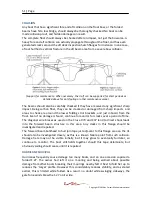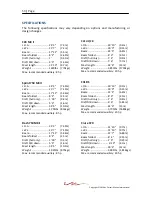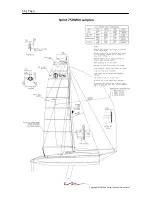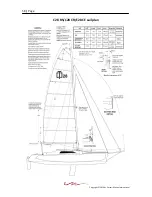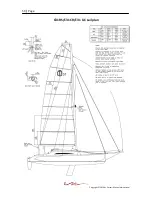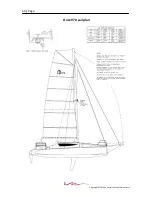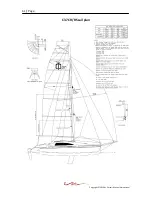
46
|
Page
Copyright © 2014 by Corsair Marine International
around its body where it enters the circular float hatch to prevent water
reentering. Pump should always be secured so that it cannot float away.
If you find your weight is insufficient to cause righting, then additional weight
such as the outboard motor or battery can be sent down the mast line to assist. If
assistance is available, then a tow sideways tow will work.
The mast may or may not be salvageable, depending on the number of crew
available.
PERSONAL RESPONSIBILITY
There have been exhaustive efforts to minimize the risk of personal injury, loss, or any
other form of damage, while operating a Corsair built trimaran, but obviously it is
impossible to completely eliminate every risk. Winches cannot be made trip proof,
nonskid can wear and cause slipping, rigging wires can be kinked while rigging and later
fatigue, lifelines can be fallen over, frequent groundings at speed can cause eventual
daggerboard or rudder failure, neglect of proper maintenance can cause early failure,
and lack of experience can cause accidents in congested areas, or bad conditions. Sailing
can be hazardous at times, and the boat operator should accept responsibility for all
such hazards.
Many of these risks have been covered in this manual, but obviously it is impossible to
cover them all. Some recommended procedures may not even be the correct ones in
certain situations. The operator should therefore always be vigilant against all possible
safety hazards and correct or warn the crew against any possible danger immediately.
SAFETY IN GENERAL
Capsize matters can be depressing, but
to put it in perspective
, a capsize is simply very
difficult to do. Luffing up slightly or
bearing away
(if on a reach) is usually all that is
required. The risk of capsize can be virtually eliminated simply by
reducing sail
according to the conditions, and being prepared to let the sheets go.
When under spinnaker in winds of over 20 knots it should always be a matter of policy
to never leave the spinnaker sheet unattended. it should be hand held, not even
cleated. Cruisers shouldn’t even use the spinnaker in over 20 knots. Under main and jib
you can still reach 15 knots, with complete comfort and safety.
Fortunately it is very hard to capsize a Corsair trimaran, but this can lead to
overconfidence. Don’t fall into this trap always be aware that it is possible to capsize,
and reduce speed accordingly to suit the conditions - just like any car.
Summary of Contents for 28R
Page 1: ...SAILING MANUAL For Corsair Trimarans ...
Page 2: ......
Page 57: ...55 Page Copyright 2014 by Corsair Marine International CORSAIR SAIL PLANS C24 MKII sail plan ...
Page 58: ...56 Page Copyright 2014 by Corsair Marine International Sprint 750 MKII sail plan ...
Page 59: ...57 Page Copyright 2014 by Corsair Marine International Dash 750 MKII sail plan ...
Page 60: ...58 Page Copyright 2014 by Corsair Marine International C28 RS C28 CR C28 CE sail plan ...
Page 61: ...59 Page Copyright 2014 by Corsair Marine International C31RS C31 CR C31 UC sail plan ...
Page 62: ...60 Page Copyright 2014 by Corsair Marine International Cruze 970 sail plan ...
Page 63: ...61 Page Copyright 2014 by Corsair Marine International C37 CR RS sail plan ...
Page 69: ...67 Page Copyright 2014 by Corsair Marine International C37 CR RS accommodation plan ...
Page 94: ...92 Page Copyright 2014 by Corsair Marine International TYPICAL TRAILER SETUP ...




















